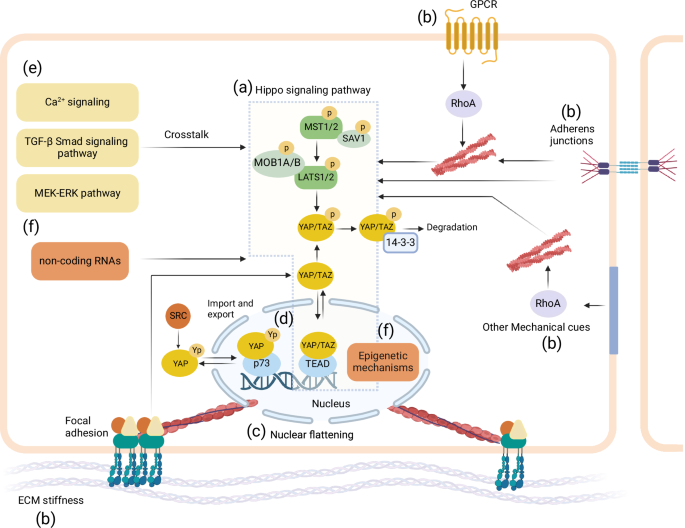从细胞机械传导的 YAP/TAZ 信号的计算建模中获得的启示。
IF 3.5
2区 生物学
Q1 MATHEMATICAL & COMPUTATIONAL BIOLOGY
引用次数: 0
摘要
YAP/TAZ信号通路受多种反馈回路、与其他通路的串扰以及机械和生化刺激的调控。计算建模是揭示这些不同因素如何调控 YAP/TAZ 的有力工具,强调生物物理建模是解密机械传导及其对细胞命运调控不可或缺的工具。我们对当前以 YAP/TAZ 信号转导为重点的计算模型的最新进展进行了深入评述。本文章由计算机程序翻译,如有差异,请以英文原文为准。

Insights gained from computational modeling of YAP/TAZ signaling for cellular mechanotransduction.
YAP/TAZ signaling pathway is regulated by a multiplicity of feedback loops, crosstalk with other pathways, and both mechanical and biochemical stimuli. Computational modeling serves as a powerful tool to unravel how these different factors can regulate YAP/TAZ, emphasizing biophysical modeling as an indispensable tool for deciphering mechanotransduction and its regulation of cell fate. We provide a critical review of the current state-of-the-art of computational models focused on YAP/TAZ signaling.
求助全文
通过发布文献求助,成功后即可免费获取论文全文。
去求助
来源期刊

NPJ Systems Biology and Applications
Mathematics-Applied Mathematics
CiteScore
5.80
自引率
0.00%
发文量
46
审稿时长
8 weeks
期刊介绍:
npj Systems Biology and Applications is an online Open Access journal dedicated to publishing the premier research that takes a systems-oriented approach. The journal aims to provide a forum for the presentation of articles that help define this nascent field, as well as those that apply the advances to wider fields. We encourage studies that integrate, or aid the integration of, data, analyses and insight from molecules to organisms and broader systems. Important areas of interest include not only fundamental biological systems and drug discovery, but also applications to health, medical practice and implementation, big data, biotechnology, food science, human behaviour, broader biological systems and industrial applications of systems biology.
We encourage all approaches, including network biology, application of control theory to biological systems, computational modelling and analysis, comprehensive and/or high-content measurements, theoretical, analytical and computational studies of system-level properties of biological systems and computational/software/data platforms enabling such studies.
 求助内容:
求助内容: 应助结果提醒方式:
应助结果提醒方式:


